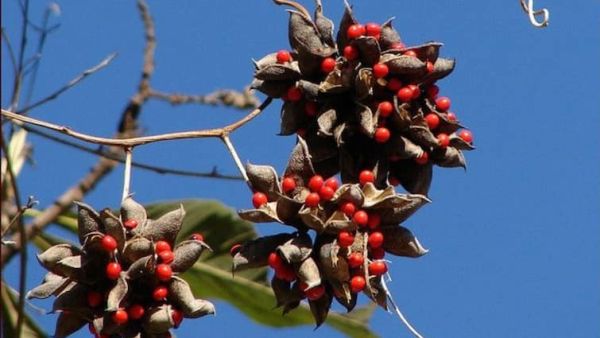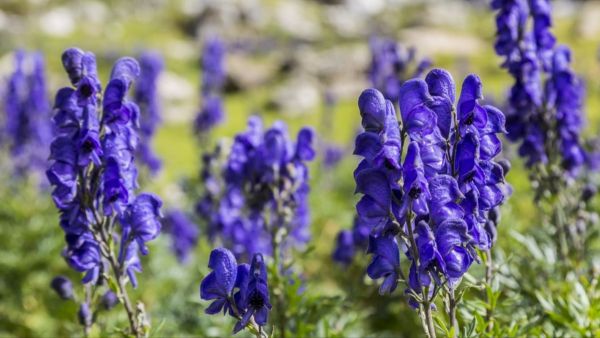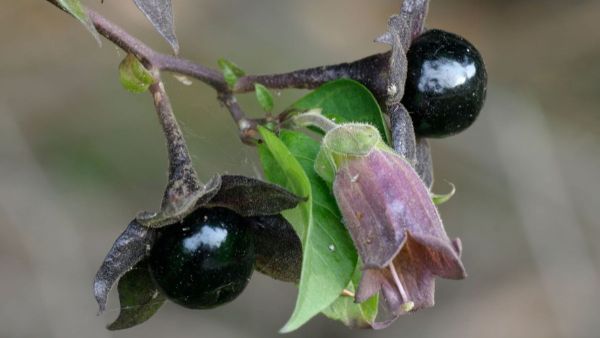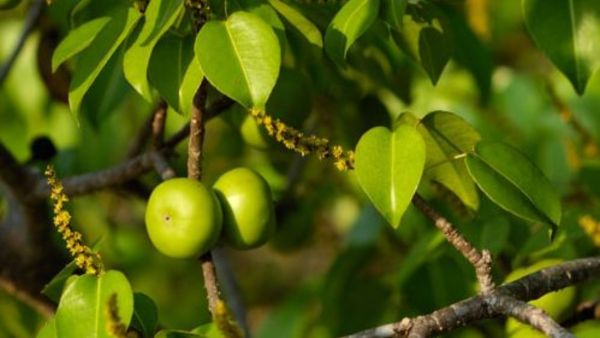
Nature is a wonderland of colours and cures, but it also hides some deadly secrets. Amid the lush greenery and vibrant flowers lie some of the world's most poisonous plants. These plants are beautiful to look at but potentially fatal to touch or ingest. Some of these plants can kill with just a brush of skin, while others may cause hallucinations, heart failure, or even organ damage. These toxic plants have earned their deadly reputations through centuries of folklore, poisonings, and scientific warnings.
Here are 6 of the most poisonous plants in the world that you should absolutely never touch.
1. Aconite

Also known as Monkshood, Wolf's Bane, or the Queen of Poisons, Aconite is a strikingly beautiful with its deep purple flowers. This plant contains aconitine, which is a potent neurotoxin that causes numbness, paralysis, and death if absorbed through skin or ingested. Earlier, this plant was used on arrow tips by hunters and warriors. Touching the plant with bare hands, especially open wounds or sensitive skin, can result in symptoms like tingling, dizziness, and respiratory distress. Aconite affects the heart and nervous system almost instantly. Wolf's Bane is commonly found in mountainous regions of Europe and Asia, and has spread to North America.
2. Deadly Nightshade

Deadly Nightshade is also known as Belladonna. It's a plant which has a dark history and an even darker toxin profile. Its shiny black berries tempt animals and children, but contain atropine and scopolamine, compounds that can cause hallucinations, seizures, and even coma. It was used in ancient times as a beauty aid. The plant dilates pupils and was even used in eye drops. Even touching the leaves or sap can irritate the skin and eyes. Belladonna grows in parts of Europe, North Africa, and Western Asia, often blending in with wild hedgerows and forests.
3. Manchineel

Known as a most dangerous tree in the world by Guinness Book of Recordsm the Manchineel grows in the Caribbean, Central America, and parts of Florida. It looks like a regular beach tree but every part of it, from its sap to its tiny fruits, is incredibly toxic. Just standing under the tree during rain can cause severe skin blistering, as the sap becomes airborne. Eating the fruit can cause extreme burns to the throat and gastrointestinal tract. Inhaling smoke from burning its wood is also harmful. Signs warning against contact are also posted near many Manchineel trees in coastal areas.
4. Oleander

Oleander, found in gardens around the world, is one of the most common yet deadliest plants. It's known for its bright pink, white, or red flowers and its ability to survive in drought-prone areas. There's a deadly secret that lies underneath its beauty, known as oleandrin, a cardiac glycoside that affects heart function. Ingesting just a few leaves can cause heart failure, especially in children and pets. Even inhaling smoke from burning oleander trimmings can be fatal. What fascinating is that this plant is used as an ornamental plant by many, making its presence even more dangerous. Oleander poisoning symptoms include vomiting, irregular heartbeat, confusion, and can progress to coma or even death.
5. Rosary Pea

The Rosary Pea can be instantly recognised due to its bright red seeds with a black spot. It's often used in jewellery, rosaries, and prayer beads in many cultures. The seeds that it has contain abrin, a toxin that extremely poisonous. Even a single crushed seed can kill an adult. The toxin inhibits protein synthesis which leads to organ failure and death within days. The outer shell is hard and usually harmless unless broken. Native to tropical regions like India, Indonesia, and the Caribbean, the plant grows as a slender vine.
6. Giant Hogweed

Giant Hogweed is a towering plant that can reach over 14 feet. Its sap can cause severe skin burns and long-tern sensitivity to sunlight. This plant contains furanocoumarins which react with UV light and can leave behind permanent scars. Even brushing against this plant can cause second-degree burns that take months to heal. Eyes exposed to its sap may lead to blindness. Native to the Caucasus but invasive in parts of North America and Europe, Giant Hogweed often grows along rivers, roadsides, and meadows.
The beauty of nature often hides in plain sight. While these plants may look innocent and gorgeous, they pose serious risks to humans and even animals.
-
Sania Mirza shares glimpse of her ‘main man’ and her happy place

-
Chhavi Mittal Says Her Breasts Are ‘No Longer the Same Size’ Post-Cancer

-
Happy Nag Panchami 2025 Wishes — Send These Messages To Your Loved Ones On This Auspicious Day

-
5 Easy At-Home Exercises That Help Burn Fat Fast Without Equipment

-
Rupee Dives Down 15 Paise Against Dollar, Erases Initial Gains Amid Strong USD Demand
